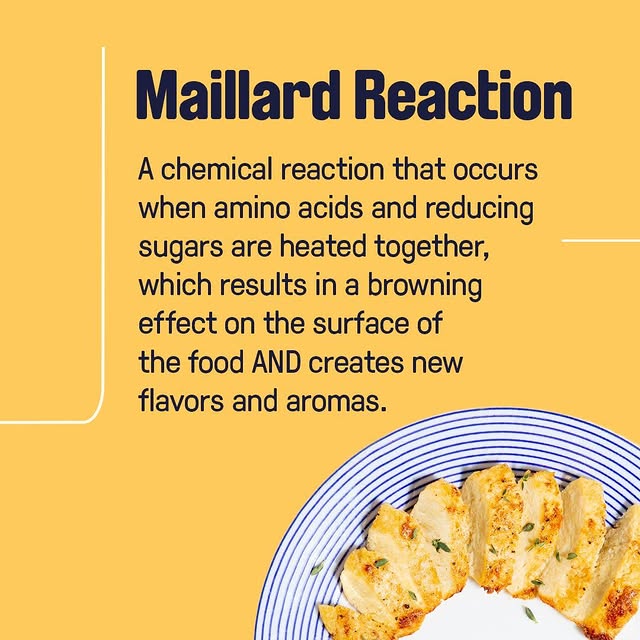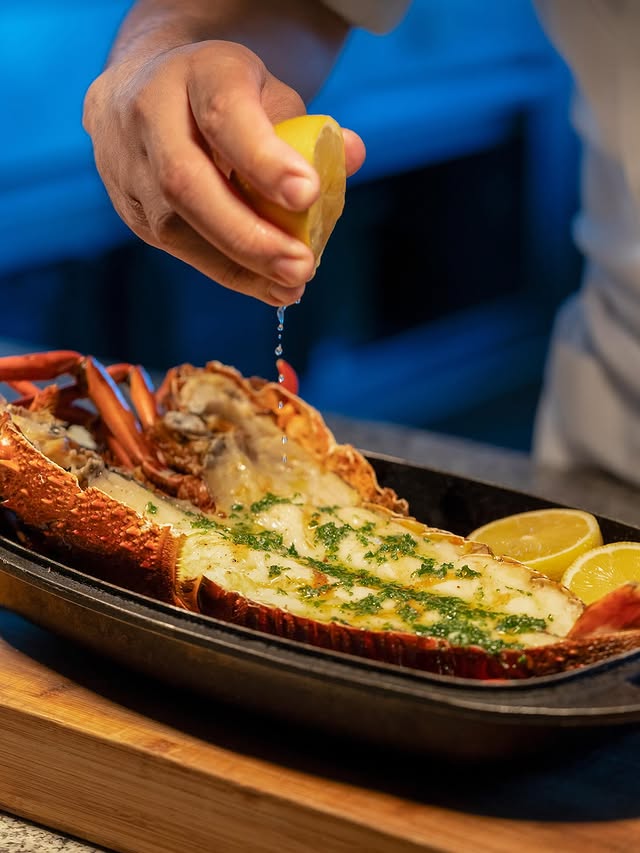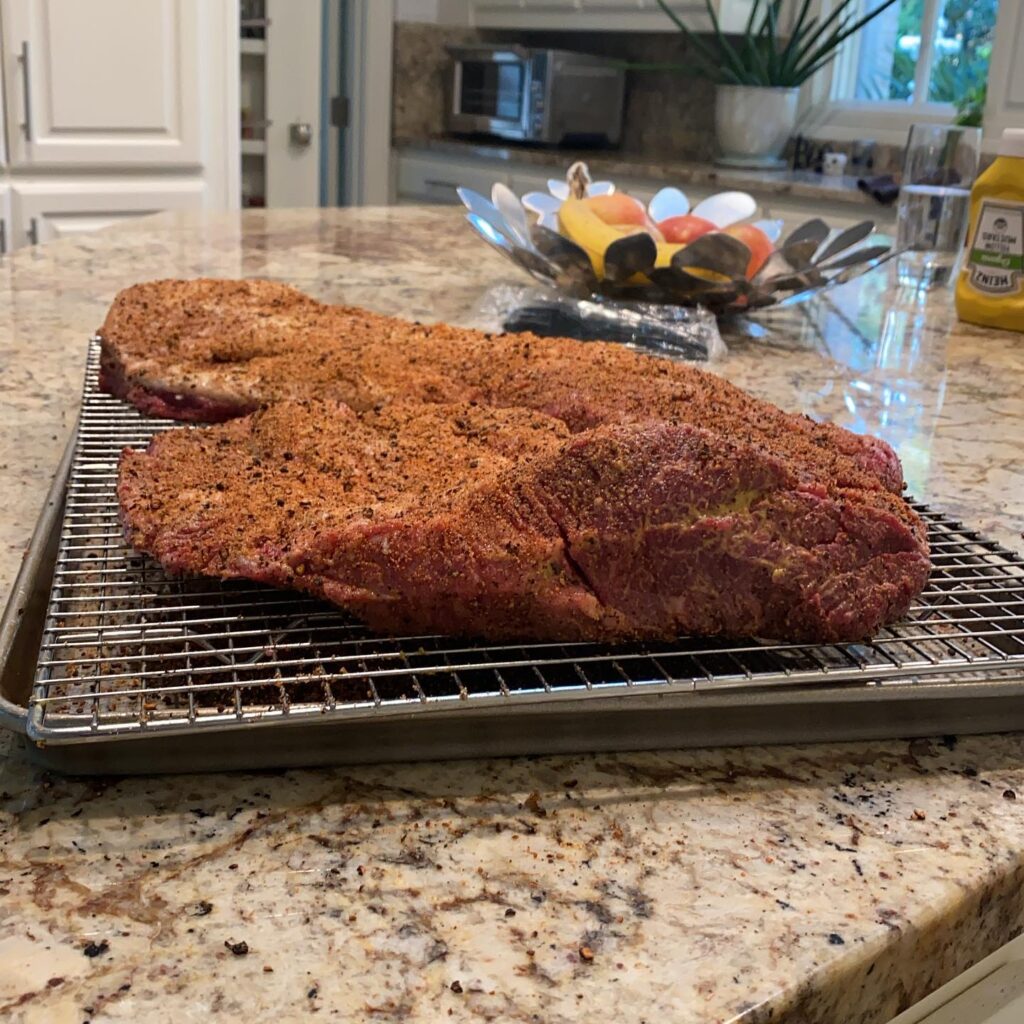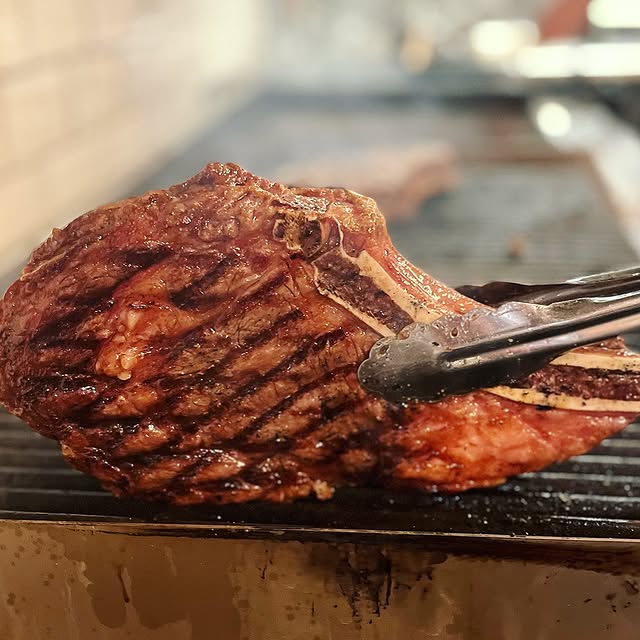You know that moment when you slap a steak on the grill and hear that angry hiss? The smoke curls up, the smell hits you, and suddenly everyone nearby starts looking hungry. That’s not just cooking – that’s chemistry.
What’s happening on that sizzling surface is something called the Maillard reaction – the scientific reason grilling creates flavor. It’s what gives your steak that golden crust, your burger its charred edges, and your bread its toasty aroma.
It’s also why boiled chicken tastes like sadness.
So grab your tongs and your curiosity. Let’s talk about the science of flavor, and how heat, time, and a bit of molecular magic make your food taste like pure joy.
What Is the Maillard Reaction? (And Why It’s Delicious)
The Maillard reaction (pronounced my-YARD) is the chemical reaction between amino acids (from proteins) and reducing sugars (natural carbohydrates) when heat is applied. It’s what turns food brown, aromatic, and flavorful.
Named after a French chemist, Louis-Camille Maillard, who first described it in 1912, this reaction is basically nature’s way of telling us that cooked food tastes better than raw food.
When heat hits meat (or bread, or coffee beans), it kicks off a chain of hundreds of mini reactions – creating new flavor molecules and that deep brown color we all chase on the grill.
To simplify: when grilling creates flavor, it’s because sugars and proteins are doing the tango at high heat.
And no, it’s not the same as caramelization. That’s sugar breaking down alone – the Maillard reaction, on the other hand, is sugar meeting protein, and together, they build flavor fireworks.

The Science Simplified: What’s Really Happening on the Grill
Let’s strip away the lab talk. Here’s what actually happens when you throw a steak on a hot grill:
- Surface moisture evaporates. The grill has to be hot enough to drive off water first Maillard can’t happen in wet conditions.
- Sugars and amino acids rearrange. Once dry, they start reacting to each other under heat (around 285°F–355°F or 140°C–180°C).
- New compounds form. These include melanoidins, which give browned food its color, and hundreds of other complex molecules that smell and taste amazing.
Each of these reactions adds layers of flavor — nutty, roasted, meaty, smoky – depending on what’s cooking.
Think of it like a flavor-building factory where proteins and sugars are raw materials, and heat is the machine that makes them dance. The longer they react (without burning), the deeper and more complex the result.
So if you’ve ever wondered why your grilled ribeye tastes more intense than one cooked in a pan – it’s because you’ve created thousands of flavor compounds right on that grill grate.
The Taste of Science: How the Maillard Reaction Creates Flavor
Here’s the fun part – what does it actually taste like?
The Maillard reaction produces hundreds of aroma and flavor molecules, each with its own character. Together, they build what we recognize as that “grilled” taste – smoky, rich, and savory.
- In meats: It amplifies umami, creating that roasted, earthy, meaty flavor.
- In bread: It gives the crust its nutty, toasty character.
- In coffee or roasted nuts: It builds deep bitterness and warmth.
Essentially, grilling creates flavor by transforming bland proteins into rich, crave-worthy compounds that hit every sense at once.
To put it bluntly: without the Maillard reaction, you’re just eating hot meat. With it, you’re eating flavor engineering.
Or, as any pitmaster will tell you – brown is not a color; it’s a flavor.
Grilling Like a Scientist: How to Maximize the Maillard Reaction
Now that you know what’s going on behind the smoke, let’s make it work harder for you.
Here’s how to get the most flavor from the Maillard reaction – no lab coat required.
- Start Dry. Moisture is the enemy of browning. If your steak or chicken is wet, it’ll steam before it sears. Pat your meat dry with paper towels before it hits the grill. This one small step can be the difference between a crispy crust and a soggy disappointment.
- Use High, Direct Heat. The Maillard reaction doesn’t even wake up until around 285°F. You want hot grates and direct flame for that first contact. Don’t be afraid of a little aggression – this is controlled chaos.
- Don’t Overcrowd the Grill. Each piece of food needs breathing room. Pack the grill too tightly, and you trap steam, cooling everything down. Give your meat space to brown properly.
- Let It Sit. Don’t flip too soon. Let the crust form before you move the meat. That crust is flavor armor – every time you mess with it, you’re interrupting the chemistry.
- Add a Little Sugar (Wisely). Marinades with a touch of sugar, honey, or mirin help kickstart browning, but too much can lead to burning. Balance is everything.
- Cast Iron + Grill = Power Couple. If you’ve ever struggled to get consistent browning on your grill, toss a cast-iron skillet or griddle on the grates. It holds and spreads heat evenly – perfect for Maillard magic.
- Rest Before Slicing. When you pull the meat off the grill, the reaction doesn’t stop instantly. Let it rest. The flavor stabilizes, and the crust stays crisp instead of turning to mush.
And one quick myth check: “Searing locks in juices” – sorry, no it doesn’t. It does, however, create that craveable, browned flavor that makes your mouth water. And honestly, that’s the whole point.

Beyond Meat: The Maillard Reaction Everywhere
If you think Maillard only happens on steaks, you’re missing out.
It’s everywhere once you start looking:
- The crust of bread
- Roasted coffee beans
- Golden-brown cookies
- Toasted marshmallows
- Caramelized onions
- Even the crispy edges of roasted vegetables
It’s the universal language of good food. Once you understand how grilling creates flavor through Maillard chemistry, you’ll see the same process happening in your oven, toaster, or coffee roaster.
Every great flavor – from BBQ to bakery – has the Maillard signature on it.
The Enemies of Flavor: Mistakes That Kill the Maillard Reaction
Want to ruin all that beautiful science? Here’s how – and how to avoid it.
- Cooking Wet Meat. Wet meat steams. Steamed meat turns gray. Gray food tastes like regret. Always dry before you fry (or grill).
- Low Temperature. If your grill’s too cool, you’ll never hit the Maillard zone. Aim for medium-high to high heat. That’s where flavor is born.
- Cold Meat. Throwing fridge-cold meat on the grill drops the temperature fast. Let it sit at room temp for 20–30 minutes before cooking. Warm meat browns better.
- Over-Marinating. Sugar-heavy marinades can burn before the inside cooks. If you want sweet notes, brush on glazes near the end instead.
- Over-Flipping. Every time you move your meat, you lose heat and slow down the reaction. Patience = better crust.
So, the rule of thumb: if your food looks pale, it’s probably wet, cold, or under-heated. The grill rewards those who wait.
Maillard vs. Caramelization: Know the Difference
Let’s clear this up once and for all. Caramelization is the browning of sugar alone – like when you toast marshmallows or melt sugar into caramel.
The Maillard reaction, on the other hand, needs both protein and sugar. It’s what makes grilled steak, roasted chicken, and baked bread crust taste complex and savory.
Think of it this way:
- Caramelization = sweet flavor (desserts, fruit, sugar).
- Maillard = savory flavor (meat, bread, coffee).
Or as I like to say: caramelization is dessert, Maillard is dinner.

Tools of the Trade: Gear That Boosts Browning
You don’t need fancy equipment to make the Maillard reaction work, but the right tools help you hit that sweet spot between heat, control, and contact.
- Infrared or gas grill: Heats quickly and evenly. Great for achieving Maillard-friendly temperatures.
- Cast iron skillet or griddle: Retains heat and gives killer crusts.
- Meat thermometer: Helps you cook through without overdoing the surface.
- Wire rack in the oven: For finishing thick cuts evenly without losing that browned exterior.
- Dry brine setup: Salt draws out moisture early so you can grill dry later.
Remember: good gear won’t make you a master, but it’ll make your mistakes more interesting.
Flavor Meets Chemistry: Why the Maillard Reaction Matters
Here’s why this matters: every great meal has a little science behind it.
Chefs, pitmasters, and food scientists all rely on the Maillard reaction to build flavor intentionally.
That golden crust, that smoky aroma, that mouthwatering bite – it’s all predictable once you understand the science.
Sous vide cooks, for example, use this knowledge by slow-cooking meat first, then finishing with a sear to trigger the reaction at the end. It’s science and art working hand in hand.
The more you learn about how grilling creates flavor, the more control you have over every bite. You stop guessing and start crafting.
The Art of Controlled Chaos
Here’s the thing about grilling: it’s part skill, part patience, and part beautiful chaos.
The Maillard reaction is what turns that chaos into flavor.
When you grill, you’re not just cooking – you’re conducting a symphony of heat, smoke, and chemistry. The hiss, the browning, the aroma – it’s all the science of the Maillard reaction at work.
So next time someone compliments your perfectly seared steak, just smile and say, “Thanks – it’s chemistry.”
You don’t need a lab coat to understand flavor. You just need a hot grill, a dry surface, and the nerve to let science do its thing.
Because when you master the Maillard reaction, you don’t just cook – you create flavor.
Featured image credit: Credit: @andreas.nicoletti

